Mission type Solar research COSPAR ID 2010-005A Mission duration 5–10 years Orbit height 36,000 km Cost 817 million USD | SATCAT no. 36395 Launch date 11 February 2010 Speed on orbit 3.075 km/s | |
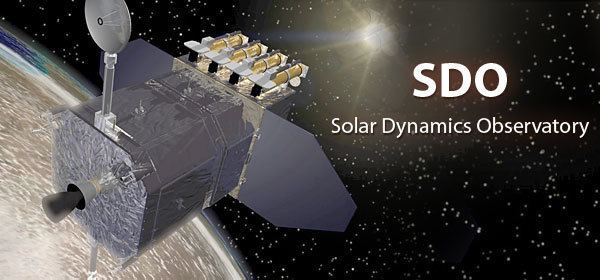 | ||
Similar Solar and Heliospheric Observatory, STEREO, Hinode, Lunar Reconnaissance Orbiter, TRACE | ||
The Solar Dynamics Observatory (SDO) is a NASA mission which has been observing the Sun since 2010. Launched on February 11, 2010, the observatory is part of the Living With a Star (LWS) program. The goal of the LWS program is to develop the scientific understanding necessary to effectively address those aspects of the connected Sun–Earth system directly affecting life and society. The goal of the SDO is to understand the influence of the Sun on the Earth and near-Earth space by studying the solar atmosphere on small scales of space and time and in many wavelengths simultaneously. SDO has been investigating how the Sun's magnetic field is generated and structured, how this stored magnetic energy is converted and released into the heliosphere and geospace in the form of solar wind, energetic particles, and variations in the solar irradiance.
Contents
- Solar dynamics observatory lifts off
- General
- Helioseismic and Magnetic Imager HMI
- Extreme Ultraviolet Variability Experiment EVE
- Atmospheric Imaging Assembly AIA
- Communications
- Launch
- Orbit
- Sun dog phenomenon
- Camilla
- References
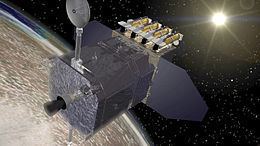
Solar dynamics observatory lifts off
General
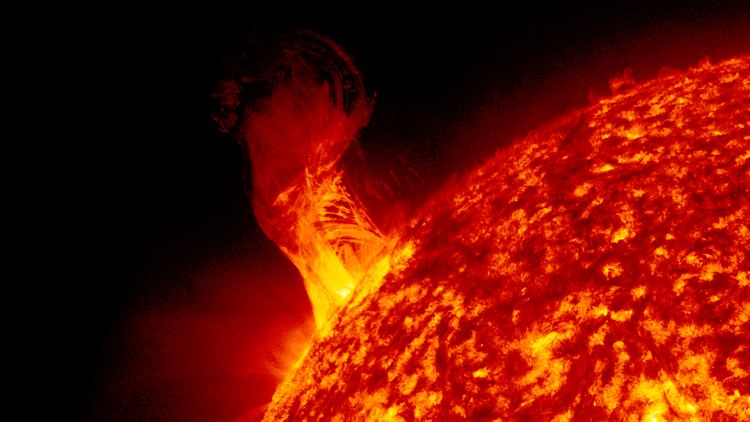
The SDO spacecraft was developed at NASA's Goddard Space Flight Center in Greenbelt, Maryland, and launched on February 11, 2010, from Cape Canaveral Air Force Station. The primary mission is scheduled to last five years and three months, with expendables expected to last for ten years. Some consider SDO to be a follow-on mission to the Solar and Heliospheric Observatory (SOHO).
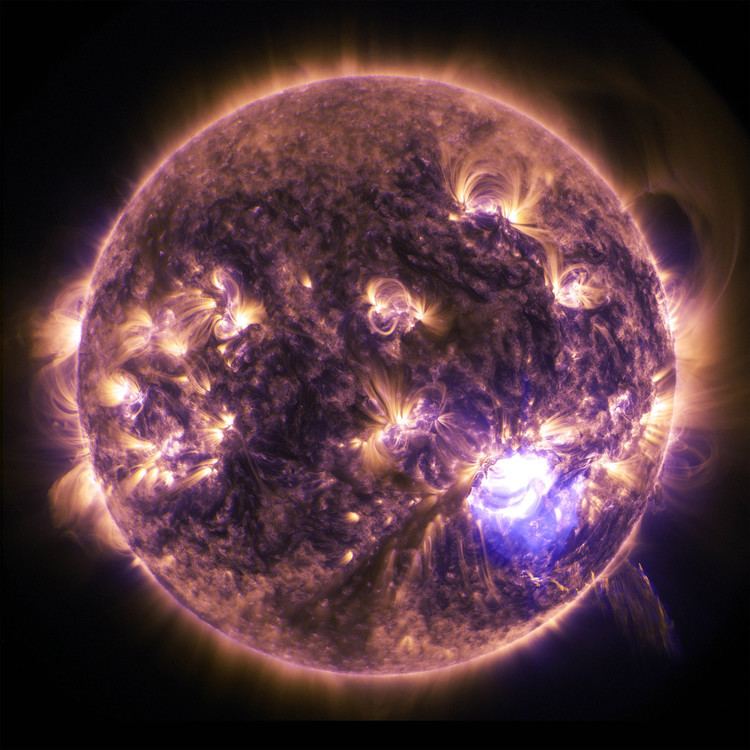
SDO is a 3-axis stabilized spacecraft, with two solar arrays, and two high-gain antennas, in an inclined geosynchronous orbit around Earth. The spacecraft includes three instruments: the Extreme Ultraviolet Variability Experiment (EVE) built in partnership with the University of Colorado at Boulder's Laboratory for Atmospheric and Space Physics (LASP), the Helioseismic and Magnetic Imager (HMI) built in partnership with Stanford University, and the Atmospheric Imaging Assembly (AIA) built in partnership with the Lockheed Martin Solar & Astrophysics Laboratory. Data which is collected by the craft is made available as soon as possible, after it is received.
Helioseismic and Magnetic Imager (HMI)

The Helioseismic and Magnetic Imager (HMI), led from Stanford University in Stanford, California, studies solar variability and characterizes the Sun's interior and the various components of magnetic activity. HMI produces data to determine the interior sources and mechanisms of solar variability and how the physical processes inside the Sun are related to surface magnetic field and activity. It also produces data to enable estimates of the coronal magnetic field for studies of variability in the extended solar atmosphere. HMI observations will enable establishing the relationships between the internal dynamics and magnetic activity in order to understand solar variability and its effects. HMI will take high-resolution measurements of the longitudinal and vector magnetic field over the entire visible solar disk thus extending the capabilities of the SOHO's MDI instrument.
Extreme Ultraviolet Variability Experiment (EVE)

The Extreme Ultraviolet Variability Experiment (EVE) measures the Sun's extreme ultraviolet irradiance with improved spectral resolution, "temporal cadence", accuracy, and precision over preceding measurements made by TIMED SEE, SOHO, and SORCE XPS. The instrument incorporates physics-based models in order to further scientific understanding of the relationship between solar EUV variations and magnetic variation changes in the Sun.

The Sun's output of energetic extreme ultraviolet photons is primarily what heats the Earth's upper atmosphere and creates the ionosphere. Solar EUV radiation output undergoes constant changes, both moment to moment and over the Sun's 11-year solar cycle, and these changes are important to understand because they have a significant impact on atmospheric heating, satellite drag, and communications system degradation, including disruption of the Global Positioning System.
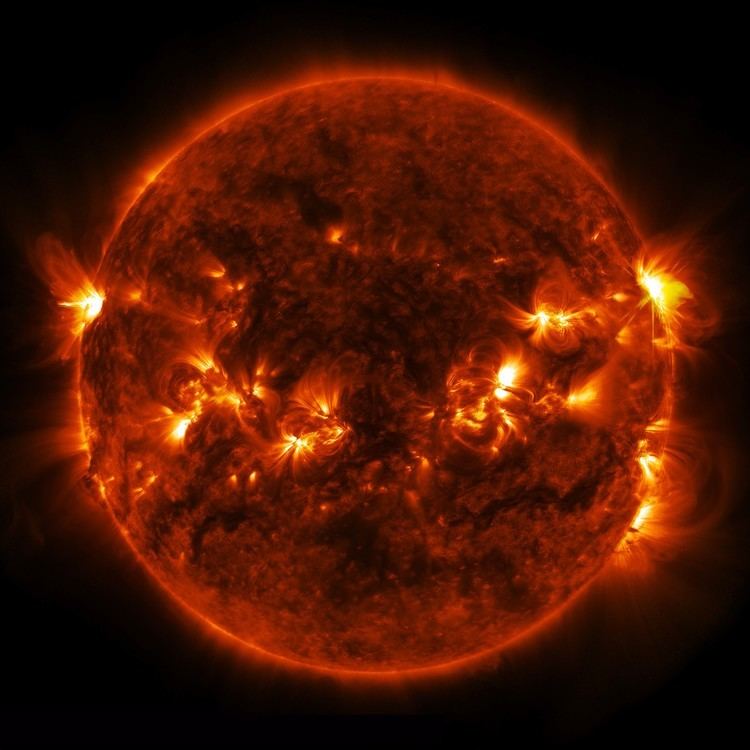
The EVE instrument package was built by the University of Colorado at Boulder's Laboratory for Atmospheric and Space Physics, with Dr. Tom Woods as Principal Investigator, and was delivered to Goddard Space Flight Center on September 7, 2007. The instrument provides improvements of up to 70 percent in spectral resolution measurements in the wavelengths below 30 nm, and a 30 percent improvement in "time cadence" by taking measurements every 10 seconds over a 100 percent duty cycle.
Atmospheric Imaging Assembly (AIA)
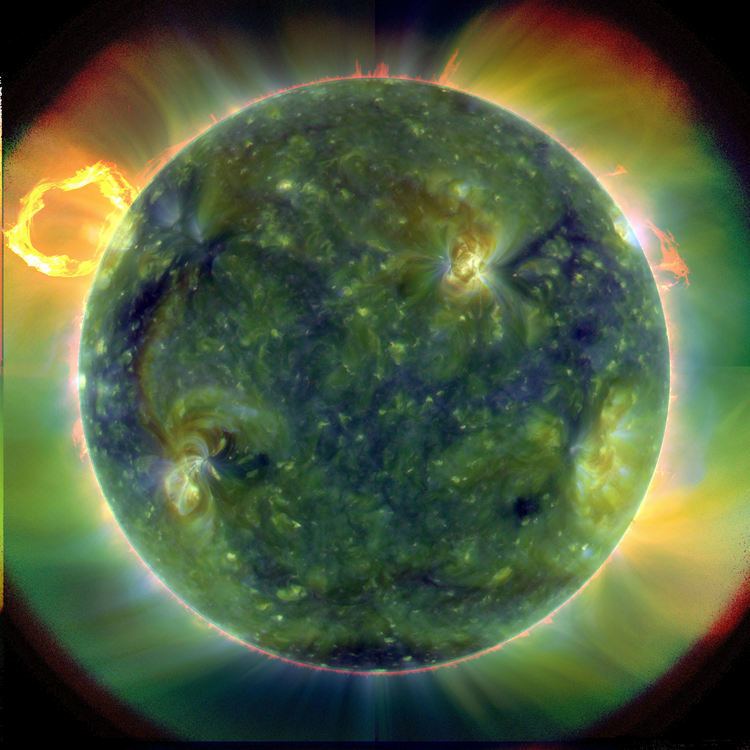
The Atmospheric Imaging Assembly (AIA), led from the Lockheed Martin Solar and Astrophysics Laboratory (LMSAL), provides continuous full-disk observations of the solar chromosphere and corona in seven extreme ultraviolet (EUV) channels, spanning a temperature range from approximately 20,000 Kelvin to in excess of 20 million Kelvin. The 12-second cadence of the image stream with 4096 by 4096 pixel images at 0.6 arcsec/pixel provides unprecedented views of the various phenomena that occur within the evolving solar outer atmosphere.
The AIA science investigation is led by LMSAL, which also operates the instrument and – jointly with Stanford University – runs the Joint Science Operations Center from which all of the data are served to the worldwide scientific community, as well as the general public. LMSAL designed the overall instrumentation and led its development and integration. The four telescopes providing the individual light feeds for the instrument were designed and built at the Smithsonian Astrophysical Observatory (SAO). Since beginning its operational phase on 2010/05/01, AIA has operated successfully, with unprecedented EUV image quality.
Photographs of the Sun in these various regions of the spectrum can be seen at NASAs SDO Data-website http://sdo.gsfc.nasa.gov/data. Images and movies of the Sun seen on any day of the mission, including within the last half-hour, can be found at http://sdowww.lmsal.com/suntoday/.
Communications
SDO down-links science data (K band) from its two onboard high-gain antennas, and telemetry (S-band) from its two onboard omnidirectional antennas. The ground station consists of two dedicated (redundant) 18-meter radio antennas in White Sands Missile Range, New Mexico, constructed specifically for SDO. Mission controllers operate the spacecraft remotely from the Mission Operations Center at NASA's Goddard Space Flight Center. The combined data rate is about 130 Mbit/s (150 Mbit/s with overhead, or 300 Msymbols/s with rate 1/2 convolutional encoding), and the craft generates approximately 1.5 terabytes of data per day (equivalent to downloading around 500,000 songs).
Launch
NASA's Launch Services Program at Kennedy Space Center managed the payload integration and launch. The SDO launched from Cape Canaveral Air Force Station Space Launch Complex 41, utilizing an Atlas V-401 rocket with a RD-180 powered Common Core Booster, which has been developed to meet the Evolved Expendable Launch Vehicle (EELV) program requirements.
Orbit
After launch, the spacecraft was placed into an orbit around the Earth with an initial perigee of about 2,500 kilometres (1,600 mi). SDO then underwent a series of orbit-raising maneuvers which adjusted its orbit until the spacecraft reached its planned circular, geosynchronous orbit at an altitude of 35,789 kilometres (22,238 mi), at 102° W longitude, inclined at 28.5°.
Sun dog phenomenon
Moments after launch, SDO's Atlas V rocket flew past a sun dog hanging suspended in the blue Florida sky and when the rocket penetrated the cirrus cloud, shock waves rippled through the cloud and destroyed the alignment of the crystals of the sun dog making a visible rippling effect in the sky.
Camilla
Camilla Corona is a rubber chicken (similar to a children's toy), and is the mission mascot for NASA's Solar Dynamics Observatory (SDO). It is part of the Education and public outreach team and assists with various functions to help educate the public, mainly children, about the SDO mission, facts about the Sun and space weather. Camilla also assists in cross-informing the public about other NASA missions and space related projects. Camilla Corona SDO uses social media to interact with fans.
